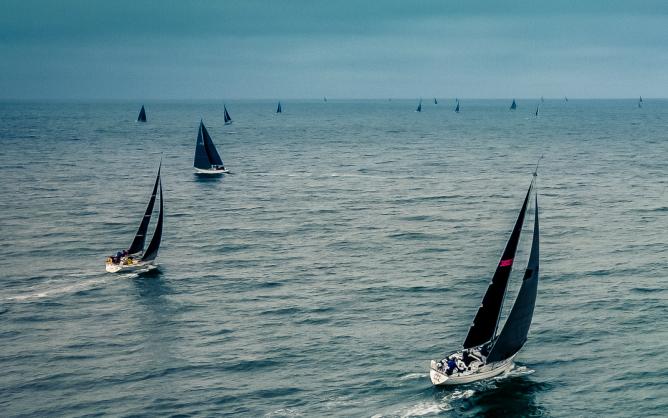Nick Evans writes that a challenging month in May produced mixed results for most hedge funds as volatility intensified across global financial markets, although several strategy areas are still showing strong gains for the year and substantial outperformance against major equity market indices.
Analysis from research firm HFR shows that more than half of all hedge funds posted losses in a month of accelerating market upheavals and worsening economic and political concerns, with only around 40 per cent of the funds in HFR’s indexation universe making gains in May.
Overall, the HFRI Fund Weighted Composite Index and the investable HFRI 500 Fund Weighted Composite Index were both down by around 0.5 per cent for the month – with the vast majority of hedge fund strategies and sub-strategy sectors losing ground.
Even managers in the previously high-performing macro, commodity, systematic and trend-following space saw their gains for the year pared back in a difficult trading environment – while event-driven strategies had a poor month, with special situations, activist and merger arbitrage funds all sustaining losses.
Despite the pullback in May, the outperformance by hedge funds against US equity index benchmarks so far this year remains striking. Since January, the HFR indices for macro, commodity and systematic funds are up by 9 per cent, 12.5 per cent and 14 per cent respectively – compared with year-to-date declines of 13 per cent for the S&P 500 and 23 per cent for the Nasdaq Composite.
Other hedge fund index-compilers such as leading managed futures prime services firm Société Générale further underline the extent to which systematic CTA strategies have thrived in the volatile market and macro environment this year – with the SG CTA Index up by 22 per cent to the end of May and the SG Trend Index up by almost 30 per cent.
“Hedge fund outperformance of US equites continued in and through the extreme financial market volatility in May, with managers navigating not only the continuation of the Russia/Ukraine war, record energy price increases, generational inflation and increasing interest rates, but with the additional factor of increased likelihood of a consumer-led US economic recession,” says HFR president HFR president Kenneth Heinz.
“Hedge funds have effectively navigated this intense 2022 volatility with not only Macro, CTA, and Commodity strategies, but also the broad-based HFRI 500 Composite of all hedge fund strategies each producing the largest outperformance since index inception of the S&P 500 and Nasdaq Composite indices through the first five months of a calendar year.”
Heinz adds: “Institutions invest in hedge funds primarily for defensive capital preservation, portfolio protection and risk mitigation, and are likely to increase allocations in coming quarters as a result of this strong outperformance through the current inflationary volatility, uncertain geo-political and macro-economic environment.”
Although equity-focused hedge funds have fared less well than multi-asset-class macro and CTA trading strategies amid the equity market rout, long/short and market-neutral managers have succeeded in mitigating downside risk in conditions that have at times been tumultuous.
While HFR’s overall Equity Hedge index is down by 8 per cent through the end of May – substantially less than both the S&P and the Nasdaq – its Equity Market Neutral index is up for the year with a gain of 0.5 per cent after making a narrowly positive return again in May.
Within equity sub-strategies, the extreme dispersion between different market sectors is also clear. HFR’s Energy/Basic Materials index is up by 4.5 per cent for the year after gaining 2.3 per cent in May, while the Technology/Healthcare index is down by more than 15 per cent year-to-date after a drop last month of almost 3 per cent.
Meanwhile, the heavy rotation out of value stocks in favour of growth stocks is also emphasise by the respective index performance. The HFRI Fundamental Growth index fell by 1.44 per cent in May and is now down by over 13 per cent for the year, while the Fundamental Value index is down by only 5 per cent since the start of the year and was actually up in May with a gain of 0.5 per cent.
HFR’s latest analysis further underscores the elevated level of dispersion in individual hedge fund performance this year. According to the firm, the top decile of the HFRI constituents gained an average of +5.7 per cent in May while the bottom decile declined by an average of -8.4 per cent for the month, representing a top-bottom dispersion of 14 per cent. Through the first five months of 2022, the top decile of the HFRI has risen by an average of +33.9 per cent, while the bottom decile has fallen by an average of -25.7 per cent.
Furthermore, the firm’s indices also highlight the extent to which the bigger hedge fund managers – including brand-name groups such as Citadel, Bridgewater, Millennium, and AQR – have generally outperformed the smaller funds in the challenging market environment of the last few months.
While the HFRI Fund Weighted Composite Index is down by 2.9 per cent to the end of May, the HFRI Asset Weighted Composite Index – which is skewed towards the performance of the larger funds – is up by 2.3 per cent so far this year.







